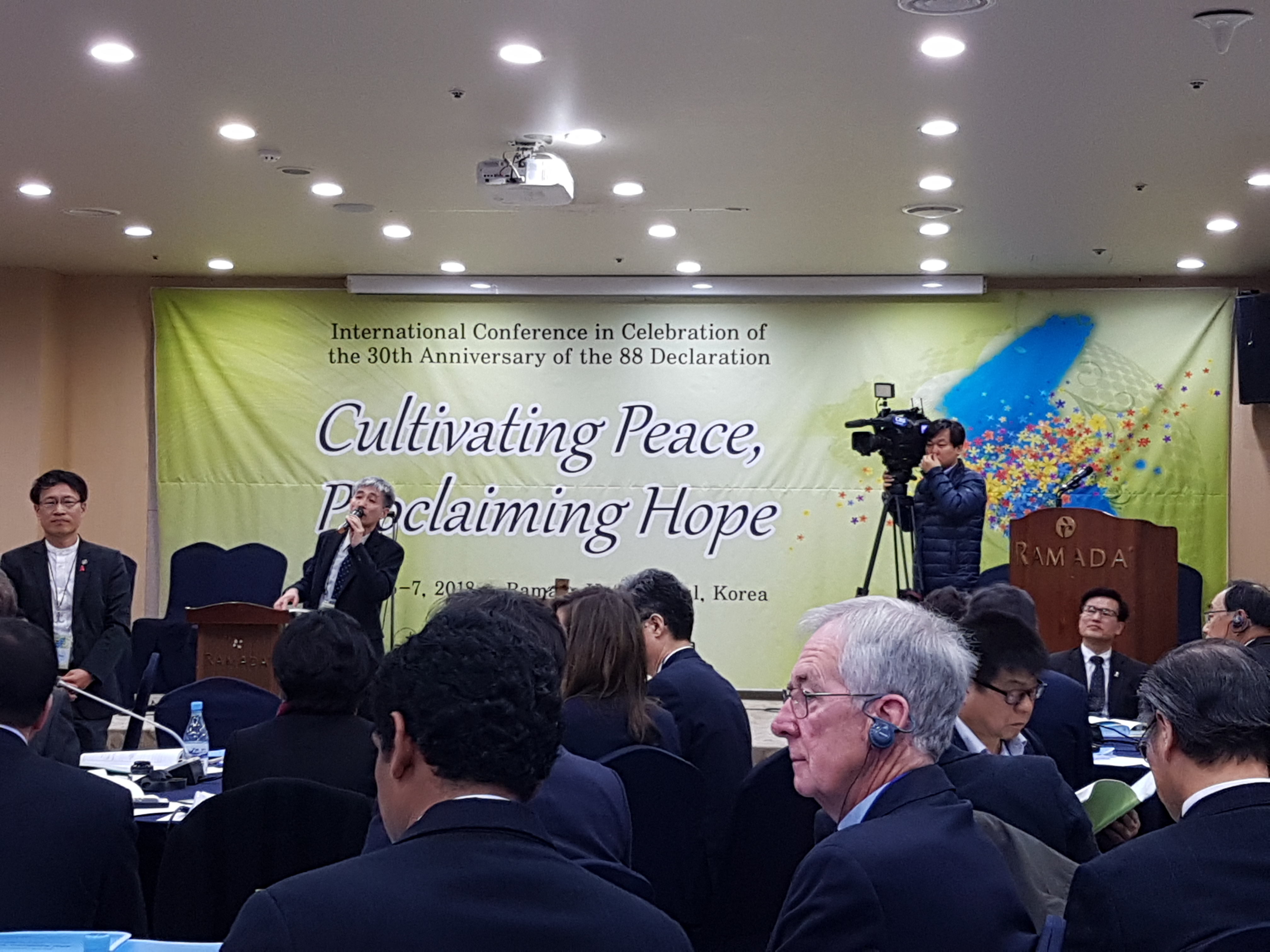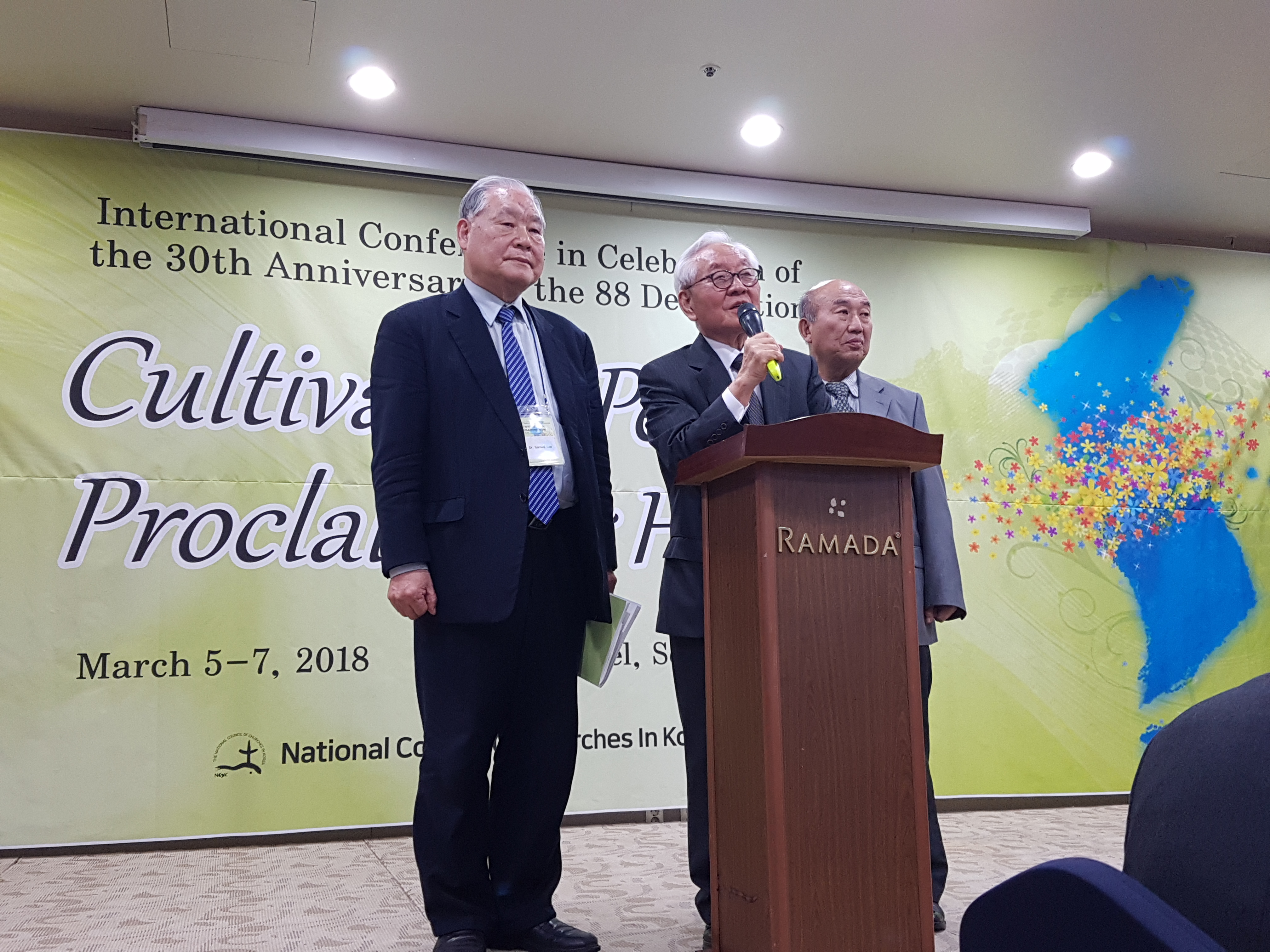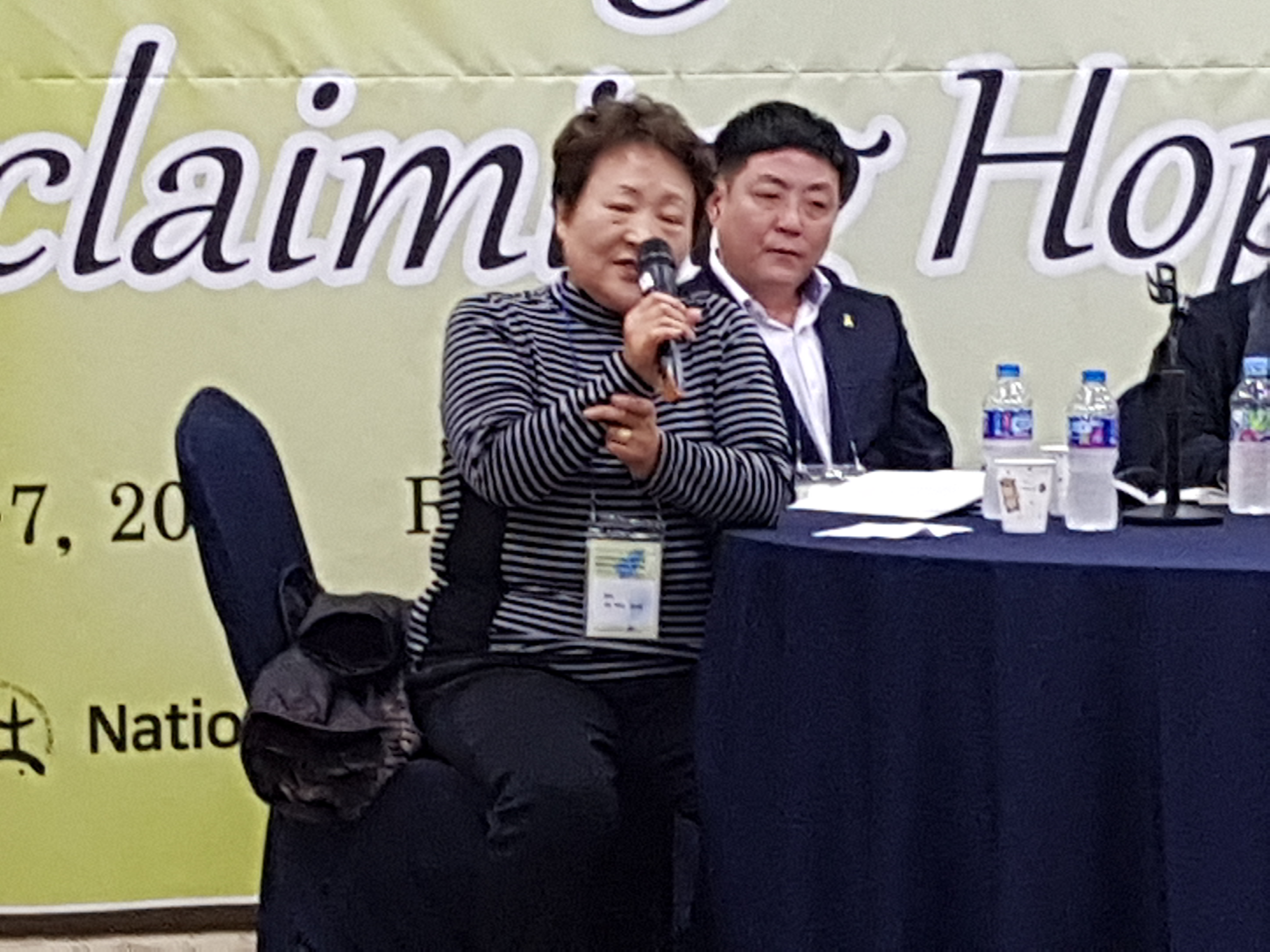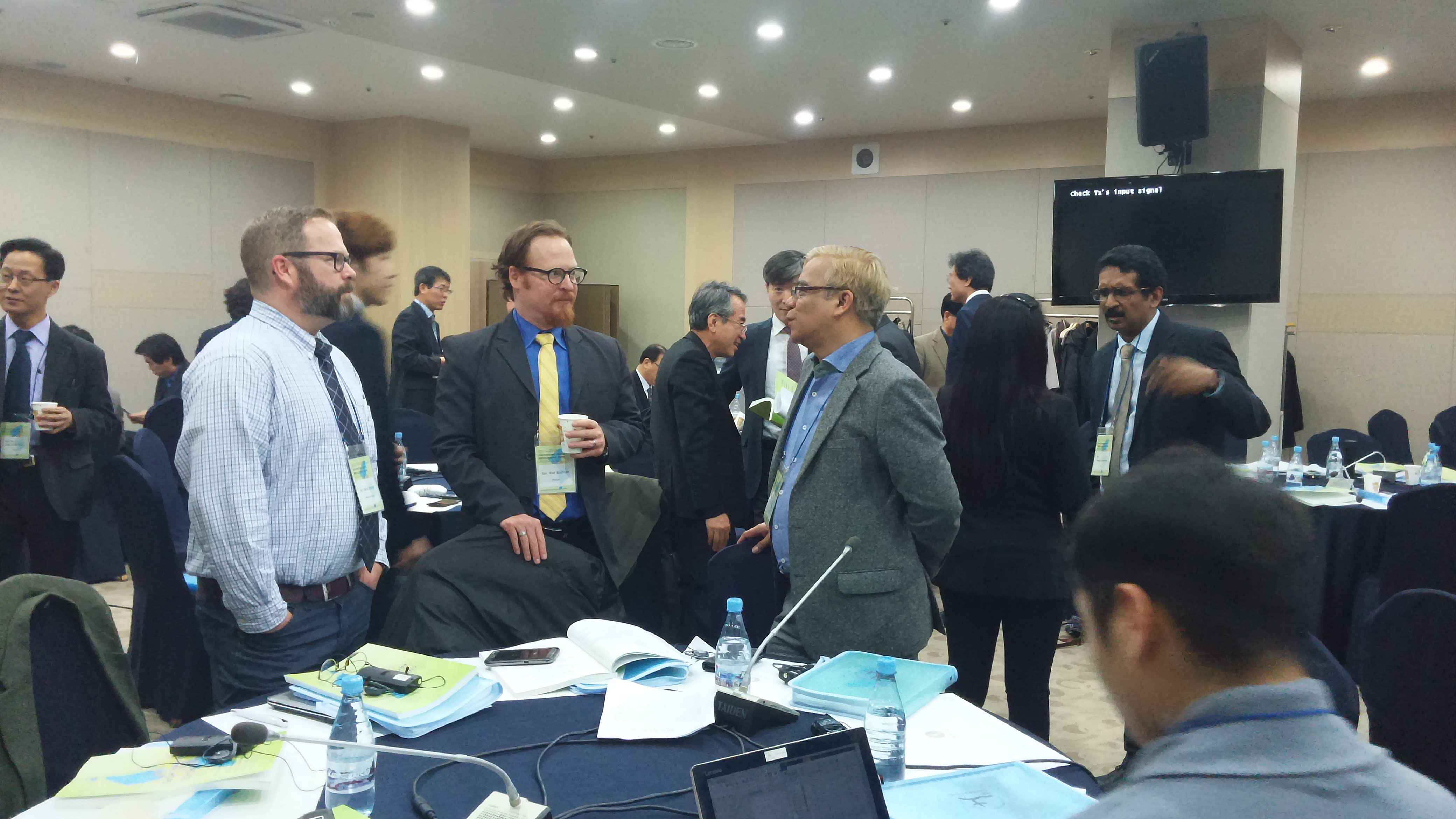A Letter from Kurt Esslinger and Hyeyoung Lee, serving in Korea
April 2018
Write to Kurt Esslinger
Write to Hyeyoung Lee
Individuals: Give online to E200496 for Kurt Esslinger and Hyeyoung Lee’s sending and support
Congregations: Give to D507560 for Kurt Esslinger and Hyeyoung Lee’s sending and support
Churches are asked to send donations through your congregation’s normal receiving site (this is usually your presbytery)
Our international gathering began with prayer and a devotion. Then Rev. Shin, Seung-min, my supervisor, announced that a South Korean government delegation had returned from a visit to North Korea and declared their meeting a success. The delegation would also soon head to Washington D.C. to deliver a message to President Trump in a move toward dialogue. The gathering welcomed such hopeful news, since the past two South Korean administrations had effectively closed the door to dialogue with the North. Elected on the wave of candlelight demonstrations for democracy, this new administration brings hope for new possibilities and peaceful reconciliation. We offered up another prayer and dedicated ourselves to continuing our work of building bridges across the conflict. As many participants knew from experience, the potential for meetings does not guarantee a solution, so we should continue to rely on God and continue the work of peacemaking to which God has called us.
Soon after Hyeyoung, Sahn, and I returned from our 6-month itineration to the US in mid-February, I began working on this conference. Our gathering was hosted by our partners, the National Council of Churches in Korea (NCCK), in cooperation with the World Council of Churches (WCC) to commemorate the 30th anniversary of the creation of the 1988 “Declaration of the Churches of Korea on National Reunification and Peace,” and to reflect on the need for renewed efforts to realize its vision. We heard some of the story of the creation of the declaration from a few of the authors who are still with us.
Readers might recognize one of them, Dr. David Suh, whose story I shared in an earlier Mission Connections letter and in sermons given throughout our itineration trip to the US. Dr. Suh served as chief editor for the 1988 Declaration. He spoke to the conference about the NCCK’s efforts leading up to 1987 to resist South Korean authoritarian dictatorship and how their struggle to realize democracy as well as their first meetings with the North Korean Christian Federation beginning in 1986 informed their vision of faith and the vision for peace outlined in the Declaration. He explained how the dictatorship used Korea’s division and the resulting Korean War as a pretense by which efforts toward democracy were suppressed from 1945 through 1987, and that it continues as a strategy for anti-democracy forces in South Korea today. Dr. Suh also described the suppression they faced within churches as they worked for liberation from dictatorship. Hence, they included passages that address the need for their own confession and responsibility:
“We confess that the Christians of the south especially have sinned by turning anti-communist ideology into a virtual religious idol, and have thus not been content to treat the communist regime in the north as merely the enemy, but have further damned our northern compatriots and others whose ideologies differ from our own (John 13:14-15; 4:20-21).”
At other times in the conference, panel speakers also told stories of the pains of division they experienced throughout the years following liberation from Japanese occupation in 1945. One defector from North Korea, Mr. Hong Gang Chul, told of psychological manipulation and a forced false confession at the hands of the National Intelligence Service (Korea’s CIA). One woman, Ms. Ko Wan Soon, told of her experience on Jeju Island when almost all of her village was killed by South Korean soldiers in one day, January 17, 1949. She described walking past the dead bodies when South Korean soldiers brought her family out with other villagers to a space near the school. When her brother on her mother’s back began crying, a soldier brought his rifle down on his head, an injury he would die from three years later. She asked the group why the US and South Korea would allow such brutality to occur under their supervision.
Another panel speaker, Dr. Jeong Se-hyun, a former minister of unification for the Republic of Korea (South), not only spoke of his own experience in negotiations with the Democratic People’s Republic of Korea (North), but also provided a fuller account of the history of such negotiations than you might read in Western media. Participants were particularly taken aback by the mention that the United States had introduced nuclear weapons to South Korea in 1958 in abrogation of the armistice agreement, thus sparking North Korea’s interest in acquiring its own nuclear deterrent. He described times during negotiations in which US or South Korean actions scuttled negotiations, such as implementing sanctions one day after releasing text of the September 19, 2005 agreement, after which North Korea turned back to development and tested its first nuclear bomb in 2006. Dr. Jeong also noted that the principles for reunification that the 1988 Declaration proclaimed — independence, peace, national unity, humanitarianism, and people’s participation — inspired South Korean government negotiators to adapt them for agreements with North Korea during previous North-South government summits on peace in Korea. The 1988 Declaration also helped to shape the policy of President Kim Dae-Jung and his administration. They used these principles in the June 15, 2000 North-South Joint Declaration (the “6.15 Declaration”), which laid out policies for unification approved by both North Korean and South Korean governments. For example, the humanitarianism and people’s participation principles of the 1988 Declaration inspired the 4th provision of the 6.15 Declaration that states, “The South and the North have agreed to consolidate mutual trust by promoting balanced development of the national economy through economic cooperation and by stimulating cooperation and exchanges in civic, cultural, sports, health, environmental and all other fields.”
To honor the spirit of offering a vision of God’s peace to the world, the conference approved a communique to share the lessons and hopes of the participants. Rev. Shin Seung-min asked me to submit the first draft of the communique, but thankfully a draft committee met to perfect the language and to incorporate further suggestions from conference reflection groups. The communique articulated a theology of peace and an invitation to Christians like you in its opening paragraph. As President Trump has now agreed to a summit with North Korea this May, these words resonate:
“God’s vision for this world sees swords being beaten into ploughshares (Isaiah 2:4), nations gathering together under the light of God’s justice and peace, sisters and brothers once in conflict embracing each other, and all God’s children fearing neither hunger, nor thirst, nor threats of war. So long as nations practice invading each other, developing bombs and missiles to destroy each other, and refusing to sit at the table until unrealistic conditions are met then we move further away from God’s vision for our world. We invite Christians around the world and all people of goodwill to join us as we walk the path of peace with our God proclaiming the promise that God will one day redeem this whole creation.”
Your support through financial donations, prayer, and joining your voice with our partners in Korea and abroad helps keep us able to continue our ministry here in Korea. We thank you so much for all that you have given us so far. It provides us with the sails needed to catch the wind to follow the movement of God’s spirit. If you have not yet, we encourage you to consider joining our movement. May the Spirit move us on a course to God’s everlasting peace. Amen.
Kurt and Hyeyoung
![]() You may freely reuse and distribute this article in its entirety for non-commercial purposes in any medium. Please include author attribution, photography credits, and a link to the original article. This work is licensed under a Creative Commons Attribution-NonCommercial-NoDeratives 4.0 International License.
You may freely reuse and distribute this article in its entirety for non-commercial purposes in any medium. Please include author attribution, photography credits, and a link to the original article. This work is licensed under a Creative Commons Attribution-NonCommercial-NoDeratives 4.0 International License.



